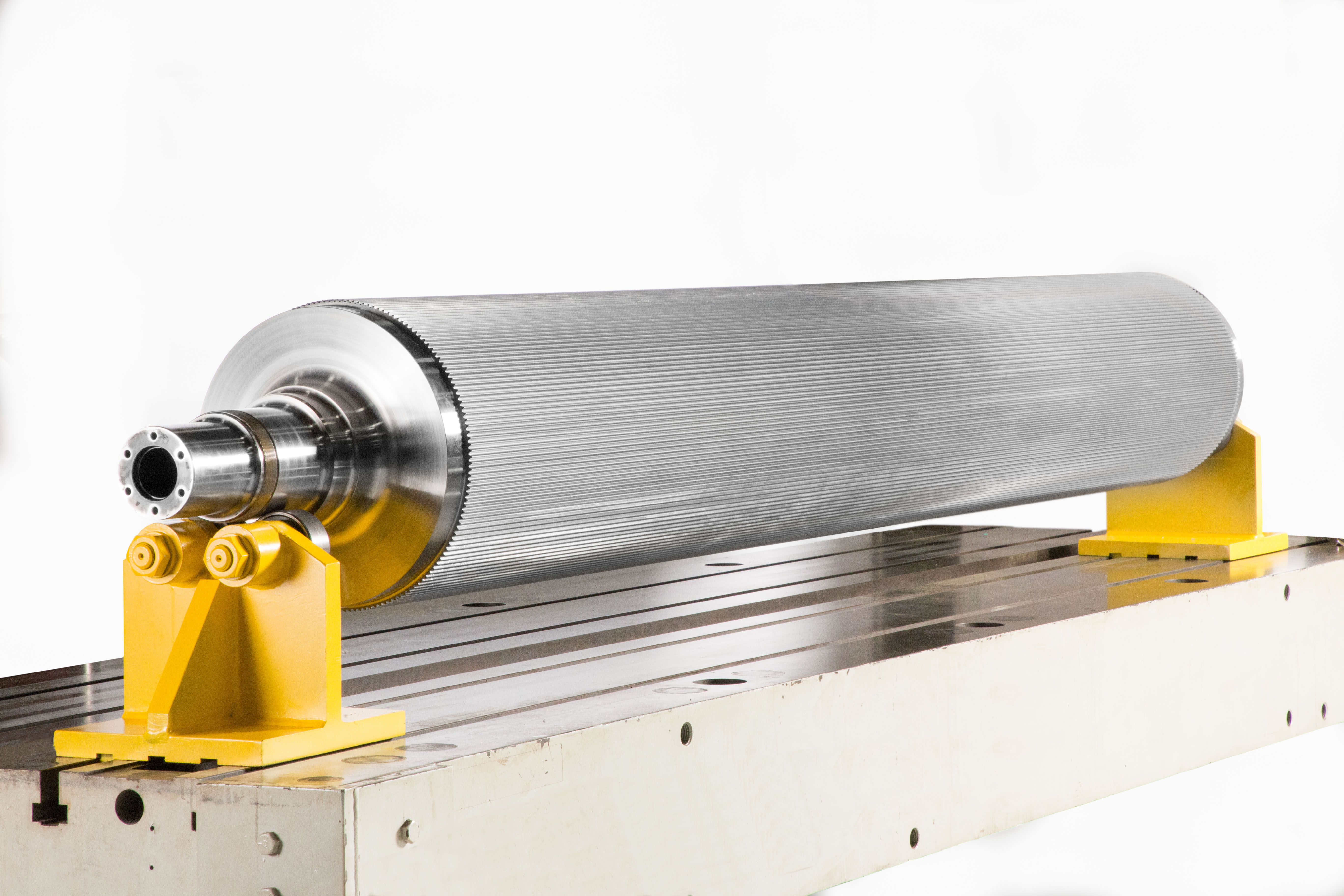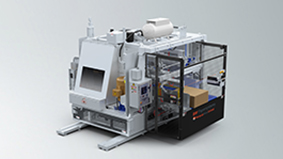
How to get more from your corrugator
Original article reprinted from the Packaging Portal
���˴�Ƭ' Cool-Vac Doublefacer upgrade ensures extended life of an existing corrugator for DS Smith at its plant in Grenaa, Denmark.
From their inception, doublefacers have been an integral part of the corrugating process. Heated cast iron plates and a cotton belt were common in traditional machines to bond an outside liner to the singleface web or to combine multiple webs and the outside liner paper.
For many years the machine developments of the doublefacer were minor, or at best incremental improvements. In the 1980s, two US based OEMs made major steps in the design of doublefacers that produced a strong, well-bonded web of corrugated board with less energy than existing designs. United Container Machinery designed a new style of high efficiency hotplate fitted with a traditional pulling section in their successful Model 600 doublefacer, while Marquip with their ‘Pyrobond’ changed the way doublefacers were designed by doing away with the cotton top belt and using a vacuum pulling section to pull the webs from the wet-end. The Pyrobond used weighted steel strips to create the gentle holddown force needed to bond the papers. The pulling was done by a Vacuum Traction Section (VTS). This combination of technologies allowed the board to cure faster, have better strength characteristics and have a low cost of ownership.
Cool-Vac
The Cool-Vac doublefacer is an evolution of the Marquip Pyrobond doublefacer and the United Model 600 doublefacer. The traditional United Model 600 doublefacer had an, at-the-time industry leading hotplate section. Their gun drilled steel hotplates and the capability to inject superheated steam into the web in the critical bonding area of the doublefacer helped create a strong initial bond with fewer hotplates and lower energy than older designs. Combining this heating section with the revolutionary non-crushing Marquip Vacuum Traction Section gave birth to this new generation of doublefacers.
A significant portion of the pulling force on the board through the Cool-Vac doublefacer is provided by the VTS. A top belt is retained upstream of the VTS, for easy threading and to ensure a good initial bond is formed over the hotplates. The efficient and powerful VTS pulling section realized a reduction in ‘footprint’ length, making the Cool-Vac the ideal machine for corrugator upgrades.
Case Study
DS Smith has a site located in Grenaa, Denmark, producing approximately 200 million sqm of corrugated board annually, supplying packaging solutions to a variety of industries including Automotive, Chemicals, Pharmaceutical and Medical, Industrial Electronics & Food and Beverage. Their packaging solutions are designed to be sustainable and cost-effective, ensuring products are protected throughout the supply chain.
The Grenaa plant was experiencing several production challenges with an existing corrugator, with increased levels of warp, bonding issues and overheating of the board during the process, as well as experiencing web weave due to the long doublefacer top belt. The existing doublefacer and rotary shear were not working to the optimum, and in some cases this can result in issues like jamming, impacting production and additional waste. Pre-print and microflute were not able to run efficiently with the existing machinery.
What Solution was Proposed?
���˴�Ƭ put forward for the supply and integration of a Cool-Vac doublefacer and SE1000 Rotary Shear to meet the customer requirements to run higher volumes of both microflute and pre-print. Further key drivers were board quality improvements, and production waste reductions.
Confidence in the new production set up has resulted with the plant seeing a significant reduction in machine downtime. This enables the possibility of the plant to run with narrower trim due to the stable control of the web (reduction in web weave) through the doublefacer, resulting in a significant ROI.
Both new machines were compatible within the existing footprint due to an integral design and were seamlessly integrated within the existing corrugator and customers Corrugator Process Control system. The BWP solution exceeded all customer key decision criteria and drivers.
Since running with the new machinery, the plant has seen significant benefits and results, which are detailed in the graph:

“The new BWP Cool-Vac and SE1000 Rotary Shear has improved our productivity and extended the life of our corrugator. Following the installation of the BWP machinery, we have seen substantial reductions in corrugator waste and warp waste, coupled with overall board TST performance increases across all board grades,” said the General Manager of DS Smith Grenaa.
He continued, “The board shape and quality of the overall product has increased significantly, this supported by increased run speeds across all grades and coupled by a large reduction in machine stops and downtime compared to our old machinery, this has resulted in us being very happy with our investment with BWP.”
He concluded, “Additionally, we have observed enhancements in our conversion throughput thanks to the improved overall board quality, along with significant savings in our overall corrugator energy consumption. All these factors have resulted in us returning a strong ROI and has enabled the plant to increase its position within the Group and further strengthen our status within the region.”





.tmb-small.webp?Culture=en&sfvrsn=d9e817f_2)







.tmb-webp.webp?Culture=en&sfvrsn=6cca827f_4)